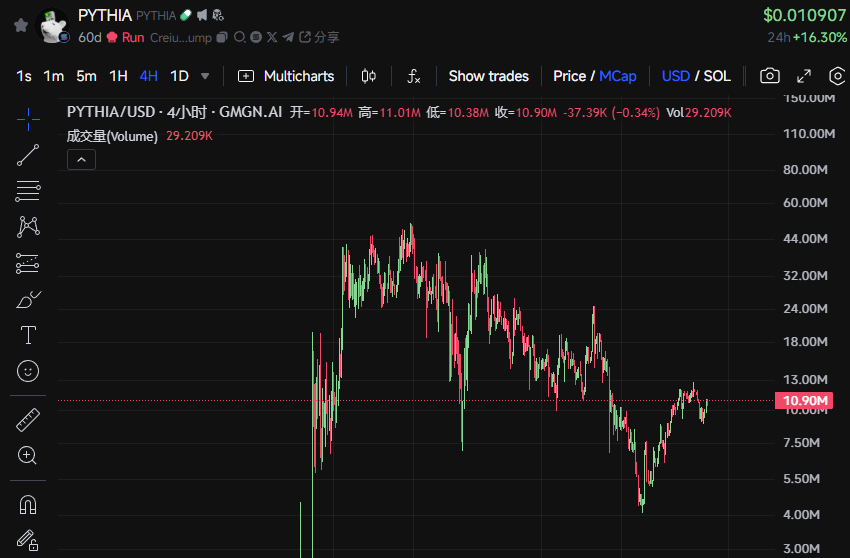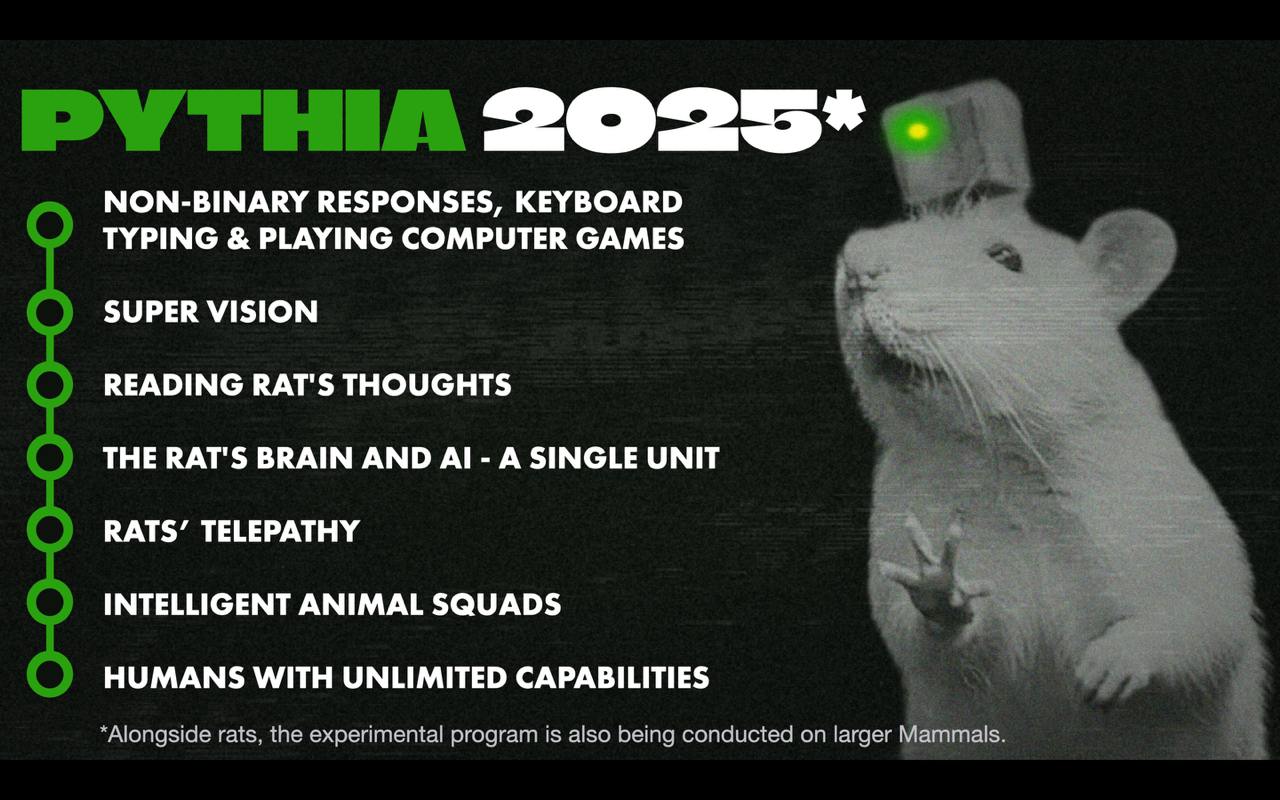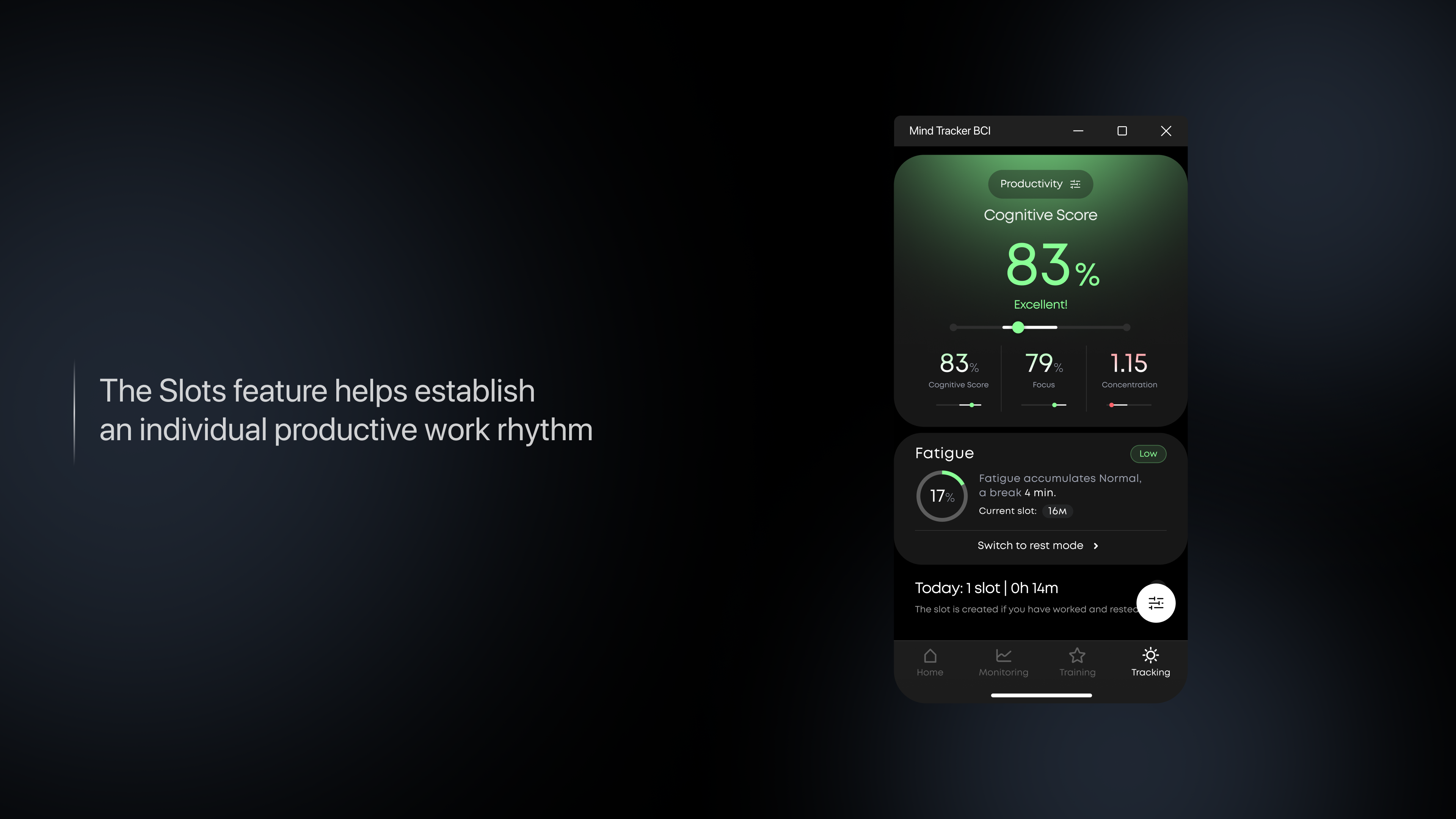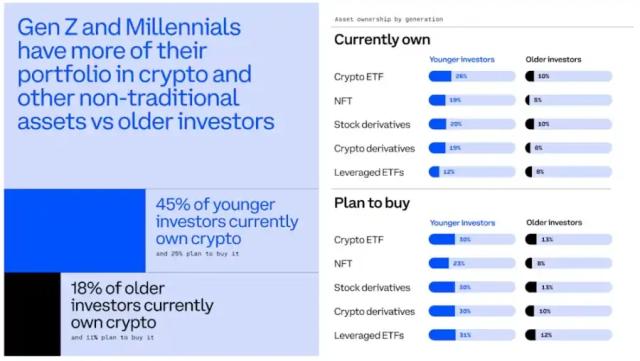Three months after Neuralink successfully achieved the first human brain-computer interface implant, an innovative study from the Neiry Laboratory at Moscow State University has transformed brain waves into crypto assets, sparking a storm in the crypto world. The laboratory, by implanting an AI chip into an experimental mouse named Pythia and connecting it to a custom-designed GPT-4 model, enabled the mouse to control buttons and answer yes-or-no questions through brain waves. This seemingly absurd experiment has unveiled a new chapter in the fusion of biology and artificial intelligence, and has also given birth to the PYTHIA token, which reached a market capitalization of $50 million in 10 days after its launch, becoming one of the most controversial crypto wealth stories in the Web3 world. This project not only demonstrates the potential of brain-computer interfaces, but also foreshadows how brain waves may become the new digital currency mining resource - signaling the arrival of a new "bio-mining" model.

Today, the PYTHIA market capitalization has quietly risen from the low point of $4 million to $10 million, and the project's continuous BUILD seems to set it apart from other meme projects that have skyrocketed and then returned to zero. Accompanying the project's progress, PYTHIA continues to rise despite the market's plunge, so what is the story behind this project? Let's explore it.
The Crypto Singularity of Brain-Computer Interfaces: Neural Pulse Language and the Bio-Data Economy
In December 2024, the experimental mouse named "Pythia" quickly became a star in the crypto circle, with the Neiry Laboratory positioning it as a pioneer in the integration of biology and artificial intelligence. By connecting Pythia's brain to a custom-designed GPT-4 model, the Neiry Laboratory successfully transformed brain wave signals into executable commands, allowing Pythia to answer simple yes-or-no questions by pressing buttons. This seemingly absurd experiment hides three important technical breakthroughs: Neurolinguistic Programming - transforming brain waves into programmable commands; Bidirectional Interaction Protocol - enabling real-time dialogue between biological entities and AI models; and Data Asset Encapsulation - converting brain wave data into tradable digital assets in the form of ERC-1155 Non-Fungible Tokens (NFTs).

Based on this experiment, Pythia has not only become a scientific project of the Neiry Laboratory, but has also quickly evolved into a MEME symbol in the crypto world, and has ultimately been tokenized as the PYTHIA token. This process has not only brought Pythia's experimental achievements into the crypto-economic realm, but has also provided a new perspective for the construction of the bio-data economy. The "Thought Mining" system launched by the Neiry Laboratory allows users to earn token rewards by wearing the Neiry headset to record electroencephalograms (EEG), transforming activities such as meditation and focus into token rewards, creating a unprecedented "bio-version of STEPN" - where the treadmill is no longer the only exercise tool, but the cerebral cortex activity of the human brain.
The "Neuro-Enhancement" Experiment of the Token Economy: The Intersection of Crypto and Neuroscience
The economic model of the PYTHIA token cleverly combines neuroscience and crypto-economics, injecting new vitality into the cryptocurrency market. The project has launched two revolutionary devices - Neiry's Mind Tracker and Brainy headsets, which provide users with brain wave monitoring and stress management functions respectively. These two devices have become the "neuro-battlefield" in the cryptocurrency market, especially in the MEME coin trading sector. The sentiment fluctuations in such markets are extreme, and traders' decisions are often interfered by news, FOMO effects, and mental overload. Neiry's devices can effectively improve traders' focus and judgment by reducing these emotional noises and timely signaling rest periods. When used in conjunction with the Mind Tracker software, it can monitor brain activity in real-time, manage stress, and enhance attention, helping users better control their trading experience and improve productivity.

Furthermore, using PYTHIA tokens for payment can enjoy a 30% discount, providing economic rewards for users. This design not only makes PYTHIA tokens a practical payment tool, but also promotes the close integration of brain wave data and cryptocurrencies, creating a new token economic model that attracts more and more users and investors. As this convergence of biological and digital economies continues, the PYTHIA project may change the way people interact, trade, and profit in the future crypto market.
The Undercurrent of the "Consciousness Economy": The Blurring of the Boundaries of Digital Life
The vision of the Neiry Laboratory goes beyond token speculation, as it is laying the foundation for the future development of brain-computer interface technology. The laboratory is developing a Neural Data Oracle, which can transform brain wave signals into verifiable random number sources, driving the deep integration of blockchain and bio-data. Meanwhile, the Multimodal Interaction Protocol allows developers to train personalized AI models using brain wave data, providing new possibilities for cognitive enhancement applications. In the future, Neiry plans to launch a Cognitive Enhancement DApp Store based on real-time brain wave data, which will provide a series of applications optimizing meditation, learning, and mental health.
 These technological advancements are gradually blurring the boundaries between digital and biological, making the definition of human consciousness more complex. Imagine when users use PYTHIA tokens to purchase an "Alpha Brain Wave Enhancement Module", they are actually customizing personalized digital neural enhancement solutions for their own brains, similar to the character Motoko Kusanagi in science fiction works. All of this may indicate that we are moving towards a future where digital and biological are fused.
These technological advancements are gradually blurring the boundaries between digital and biological, making the definition of human consciousness more complex. Imagine when users use PYTHIA tokens to purchase an "Alpha Brain Wave Enhancement Module", they are actually customizing personalized digital neural enhancement solutions for their own brains, similar to the character Motoko Kusanagi in science fiction works. All of this may indicate that we are moving towards a future where digital and biological are fused.
The Crypto Utopia on the Edge of the Ethical Cliff: The Interplay of Technology and Morality
Although PYTHIA is imbued with immense technological potential, it also raises concerning ethical issues. First, the Paradox of Consciousness Commodification is deeply thought-provoking - when brain waves and attention become tradable assets, a new form of "mental depletion" may emerge, where users endlessly strengthen cognitive activities to obtain tokens, even unconsciously consuming their own mental energy. Secondly, as the value of brain wave data increases, Neurosecurity issues become increasingly serious, with hacker attacks potentially leading to the leakage of individuals' most private biological data, and even spawning "consciousness ransomware" crimes. Furthermore, the Regulatory Vacuum is also an undeniable risk, especially in the context of the US FDA's investigation into the crypto incentive compliance of brain-computer interface devices. The challenges facing PYTHIA are not only about repairing smart contract vulnerabilities, but also ensuring that the most private biological data of humans will not be alienated as financial instruments. The future of PYTHIA is destined to be not only a battle of technological breakthroughs and market adaptation, but also a reflection of the complex interplay between morality and regulation.







